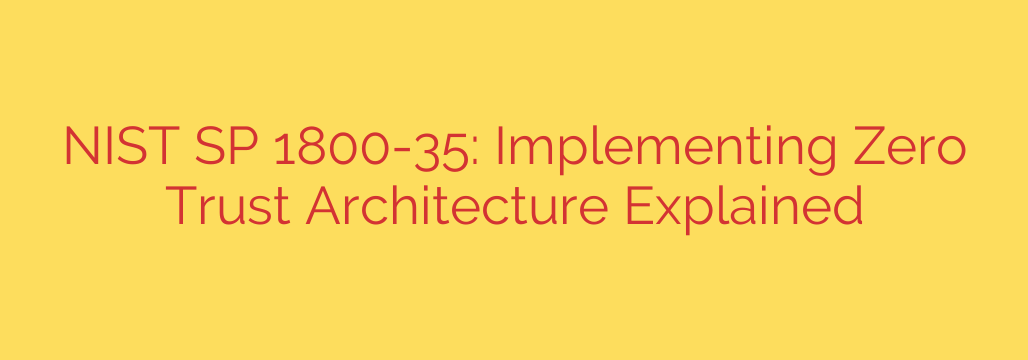
Securing modern digital environments demands a fundamental shift in thinking. The traditional perimeter-based security model is no longer sufficient against today’s sophisticated threats. This is why the Zero Trust security model has become essential. At its core, Zero Trust operates on the principle of never trust, always verify. It mandates strict identity verification for every person and device attempting to access resources, regardless of their location relative to the network.
Implementing a Zero Trust Architecture (ZTA) involves a strategic approach focused on protecting critical data and assets, often referred to as the protect surface. This isn’t just the attack surface; it’s the critical data, assets, applications, and services (DAAS) that are most valuable. Building a ZTA requires understanding the flow of transactions across this protect surface and designing policies around it.
A successful ZTA relies on several interconnected components working together. The policy engine is central, making access decisions based on enterprise policy. This engine receives input from various sources, including identity systems, asset inventories, threat intelligence feeds, and continuous diagnostics and mitigation (CDM) systems. The policy administrator manages the policy engine and policy rules. Access requests are enforced by policy enforcement points, such as proxies, next-generation firewalls, or API gateways, which allow, deny, or restrict sessions based on the policy engine’s decision.
Key foundational elements for ZTA implementation include robust identity and access management (IAM) systems, comprehensive device management and security posture monitoring, microsegmentation of network resources, and advanced analytics for continuous monitoring and threat detection. Every access request must be authenticated, authorized, and encrypted. Contextual factors, such as user identity, device security posture, location, and the specific resource being requested, are continuously evaluated before granting or maintaining access.
Transitioning to Zero Trust is not a single project but an ongoing journey. It requires a phased approach, starting with identifying the most critical protect surfaces, mapping data flows, and then iteratively designing and implementing policy enforcement points. Automation is crucial for managing policies and responding quickly to changes in the security posture or environmental factors. By eliminating implicit trust and enforcing granular, dynamic policies based on context, organizations can significantly enhance their security posture and resilience against modern cyber threats. Embracing Zero Trust is about building a more secure, adaptable, and defensible infrastructure for the future.
Source: https://blog.cloudflare.com/nist-sp-1300-85/








